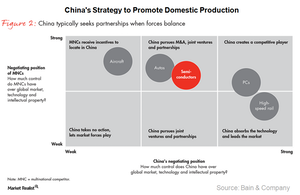How Could a Memory Collaboration with Intel Benefit China?

Whereas China (FXI) is the largest consumer of semiconductors in the world, it meets most of its needs through semiconductor imports. The Chinese government plans to invest $160 billion to develop its domestic semiconductor industry, and Tsinghua Unigroup is the biggest beneficiary of this grant. The company spent $24 billion on a NAND plant, which could start manufacturing 32-layer 3D NAND chips by the end of 2018 and ramp up production in 2019. However, China would still be four years behind its South Korean (EWY) competitor, Samsung (SSNLF).

 Yahoo Finance
Yahoo Finance